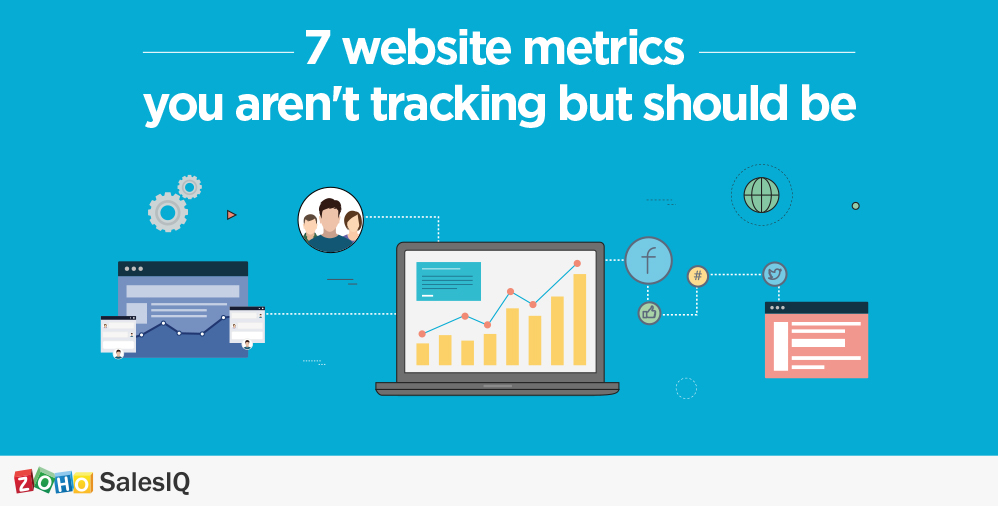Reading Time: 3 minutes
With over a billion websites expected by mid 2016, attracting visitors to your site is as important, and also as difficult, as ever. Simply having a website is no longer enough. Business owners now have to measure and analyze a number of crucial metrics in order to improve their strategies, stay relevant with their target audience, and vie for the attention of the internet’s three billion users.
It’s time to start listening to your site statistics so you can consistently attract new and recurring visitors. Here are seven metrics you need to start tracking right away:
1. Traffic: How many people visit your website every day? Tracking this statistic would immediately tell you whether your website is succeeding, failing, or stagnate. Total traffic is composed of unique (new) and repeat visitors. A high number of unique visitors indicates good visibility, while more repeat visitors means you have compelling content.
Ideally, both these numbers should grow simultaneously. Every time you run a campaign or a marketing initiative, the spike in unique visitors will tell you how well the campaign performed. However, if you don’t have an increase in repeat visitors, you may need to rework the content and design of your website to build a loyal visitor base.
2. Traffic Source: It’s important to know where your visitors come from. Typically, there are four sources:
a) Organic search: Visitors who come to your website through search engines. The probability of converting these visitors into customers is high because they’ve landed on your site after searching for a topic your website provides.
b) Referral: Those who come from other websites. It’s great if other sites link to your website and send traffic your way.
c) Direct: These are your loyal visitors who directly enter your website’s URL into the browser.
d) Social: These visitors come via Facebook, Twitter, LinkedIn or other social media channels.
Tracking the traffic source will help you plan campaigns and marketing activities because you’ll know which platform(s) are the best for attracting your target audience.
3. Bounce Rate: This metric is the percentage of people who land on your website and leave without browsing. A low bounce rate means most of your visitors find interesting and relevant content on your website and stay. Linking to interesting pages on the website—perhaps the best performing ones—is a great way to retain visitors. You may also consider customizing pages to suit individual visitor’s interests.
4. Exit Rate: This metric gives you the percentage of visitors who go to a different website from each page. By knowing the culprit pages, you can then rework them to be more engaging.
If you have an e-commerce website, you would want to take this a step further and track the cart abandonment rate. Why are people leaving the cart? Is there a problem with the payment gateway? Is it too difficult to navigate, or is the payment process cumbersome? It’s useful to engage with visitors on a page where they are most likely to exit, and help them with any issues they might face.
5. Conversion Rate: Ultimately, you want your website visits to translate into business. This metric tells you how many of your visitors turn into customers.
You may also want to track cost per conversion, i.e how much you spend to get one customer or lead. This can be different for every business depending on their goals. Is it when a visitor makes a purchase, fills out a contact form, subscribes to your blog/newsletters, or shares content on social media? You can track one or more of these metrics and see how well your website is performing.
A related metric is customer retention rate. Once visitors buy from you, they are likely to buy again. And, if their experience is good, they are also likely to spread the word.
6. Top Pages: Which pages on your website get the most traffic? This will tell you what is working for you and what is not. When you know what your visitors like, you can replicate it on other pages and even add a CTA button on your top performing pages to prompt your visitors to subscribe or buy.
You can also add links to other well-performing pages or ones with related content. Think about the ‘most read’ section on news websites, or the tab in e-commerce websites that says ‘customers who bought this also bought’. Knowing your top pages will help you put your best foot forward.
7. Visitor Behavior: What are your visitors doing on the website? We spoke earlier about the importance of knowing your website visitors. Based on their behavior, you can also segregate hot, warm, and cold leads using Zoho SalesIQ.
A related metric is interactions per visit. Interactions can range from leaving a comment/review or sharing content on social media, to chatting with an agent and clicking CTA buttons. An engaging website with a high interaction ratio will help you build loyal visitors.
Merely tracking these metrics is not enough. They tell you how your website is performing and point out areas for improvement. But you need to act on the stats to succeed. If you have any anecdotes or tips to share, please do so in the comments section below.

